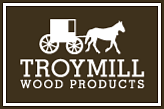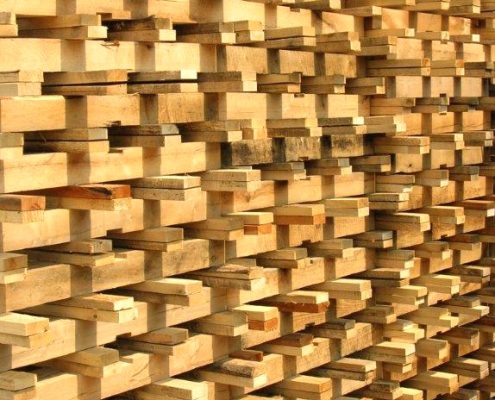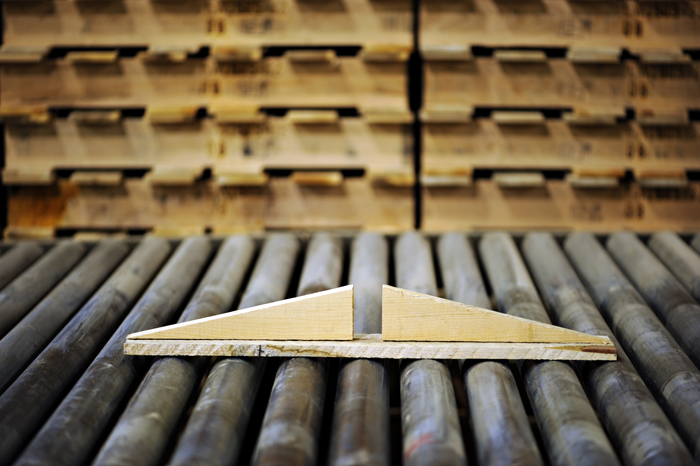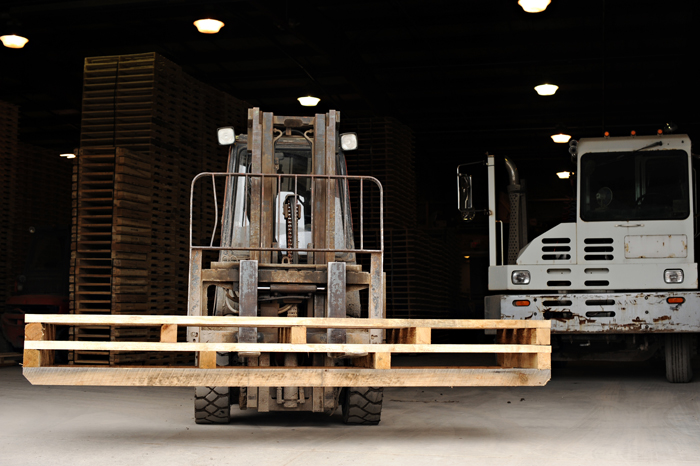Industrial Pallets Ohio | Wooden Skid Pallet Manufacturer
Troymill’s wooden skid pallet manufacturer roots can be found in serving the needs of the heavy industrial pallet user and those roots have not been forgotten.
Troymill offers coil and sheet skids, bolted designs, wedge top pallets and a countless variety of other industrial designs to suit the needs of the steel, aluminum, copper and other heavy metal and chemical industries.
- Coil Skids: 2-3 Stringers typically, Single Face Heavy Duty Pallet.
- Sizes from 24×24 to 60×60 are typical
- Sheet Skids: 2-4 Stringers typically, Single or Double Face.
- Sizes from 36×96 to 60×144 are typical.
- Vendor Managed Inventory (VMI) and Just-In-Time (JIT) programs available.
- Branding, Stenciling, and Heat Treatment (ISPM-15 Compliance) for export
- Drilled, Painted and Bolted Pallets
- Heat Treatment, Bark Free for export needs (IPPC/ISPM-15)
Wooden Skid FAQs
What Is a Skid of Wood?
A “skid of wood” typically refers to a stack or bundle of wooden materials, often lumber or timber, that has been placed on a skid or pallet for ease of handling and transportation. The term “skid” is sometimes used interchangeably with “pallet” or “palletized load.” Essentially, it means that a collection of wooden items, such as boards, planks, or logs, has been assembled and secured on a skid or pallet, making it more manageable for forklifts, pallet jacks, or other equipment to move or transport the materials.
What Is The Difference Between a Pallet and Skid?
A pallet is a portable platform with both a top deck and a bottom deck. It typically has both top and bottom deck boards (the flat, horizontal surfaces) that are perpendicular to stringers or blocks (the vertical supports). Pallets are designed for more stability, load distribution, and versatility. A skid, on the other hand, is a single-deck loading platform that lacks a bottom deck. It consists of just the top deck boards and sometimes corner blocks or feet for stability. Skids are simpler in design and are often used for one-way shipping or storage.
What Wood Is Used For Skids?
Skids are typically constructed from various types of wood, and the choice of wood depends on factors such as availability, cost, and the intended use of the skids. Common types of wood used for skids include:
Softwood: Softwood species are often used for skids. They are readily available, cost-effective, and suitable for many light- to medium-duty applications. Softwood skids are typically used for one-time or short-term shipping or storage needs.
Hardwood: Hardwood species are chosen for skids when greater strength and durability are required. Hardwood skids can withstand heavier loads and more wear and tear. They are often used in applications where the skids may be reused multiple times.
Treated Wood: In situations where skids may be exposed to moisture or outdoor conditions, treated wood is used to prevent rot and decay. Pressure-treated wood skids offer increased durability, making them suitable for outdoor and long-term use.
The choice of wood for skids is based on the skid’s intended application and the load-bearing requirements. It’s important to consider factors like the weight of the cargo, the potential for exposure to moisture or the elements, and the expected lifespan of the skids when selecting the appropriate wood type.
Are Wood Skids Treated?
Wood skids can be either treated or untreated depending on the intended use of the skid. The decision to use treated or untreated wood skids hinges on the particular requirements of the project or application at hand. For untreated wood skids, it is crucial to consider factors such as the expected lifespan of the skids, their potential exposure to moisture, and the necessity for protection against pests and decay. Treated wood skids, in contrast, offer increased durability and are more suitable for long-term usage, especially in outdoor applications or environments where wood preservation is vital.
How Big Is a Skid Pallet?
Skids come in a standard size of 48×40, but it’s important to note that wooden skids can come in various dimensions, and the size may be tailored to the specific needs of a particular application or industry. Skids are often chosen for their simplicity and may lack the additional features, such as a bottom deck or extensive interlocking design, that are commonly found in pallets. The key is that skids provide a single-deck loading platform that elevates cargo slightly above the ground, making them suitable for one-time or short-term shipping and storage needs.
What Is The Purpose of a Skid?
Wooden skids fulfill multiple essential purposes in the realms of shipping, storage, and material handling. These versatile platforms are designed to serve a range of functions in various industries and applications.
One primary purpose of wooden skids is to function as a temporary shipping platform. By elevating goods and materials slightly off the ground, skids protect the cargo from potential damage, moisture, and contact with dirt or contaminants during transportation.
Simplifying the handling of loads is another vital role played by skids. They provide a practical means of moving goods, even when full-sized pallets may not be warranted. Skids can be effortlessly maneuvered using forklifts, pallet jacks, or other material handling equipment, which enhances efficiency and minimizes the risk of damage during transportation.
Cost-effectiveness is a notable advantage of using skids for shipping. These platforms offer a more economical alternative to full-sized pallets, making them an attractive choice for one-time or short-term shipping requirements. Skids deliver some of the benefits associated with palletization without the added complexity and expenses associated with standard pallets.
One of the key features of skids is their ability to be customized in terms of dimensions. Manufacturers can produce skids in various sizes to precisely match the size and shape of the cargo they are intended to support. This customization ensures a snug fit and secure support for the goods.
Skids are often employed for short-term storage in warehouses or on job sites. In such scenarios, where longer-term storage or the reusability of standard pallets may not be necessary, skids offer a practical and straightforward solution.
By elevating cargo off the ground, skids provide a protective barrier against potential moisture damage, especially when items should not come into direct contact with the floor. This is crucial for maintaining product integrity, particularly in industries where hygiene standards are paramount or where moisture sensitivity is a concern.
The utilization of skids also facilitates easier stacking of goods. Their stable and level surface ensures that stacking is organized and secure, helping to maximize storage space and enhance overall warehouse or job site efficiency.
Wooden skids are versatile tools that serve as cost-effective, customizable, and efficient platforms for various applications. Their simplicity, ease of use, and adaptability make them a valuable resource for addressing temporary shipping and storage needs.





